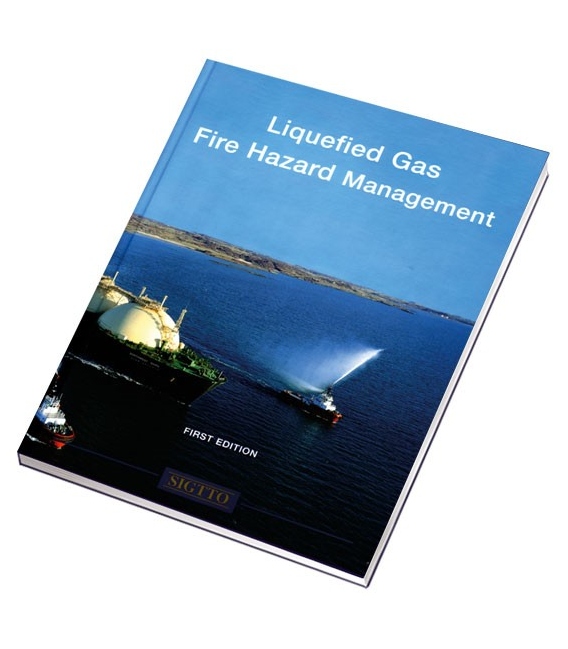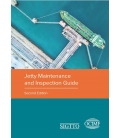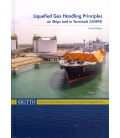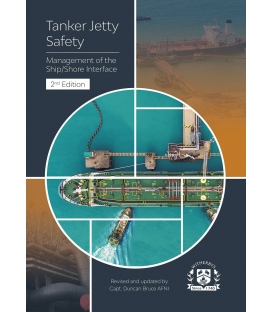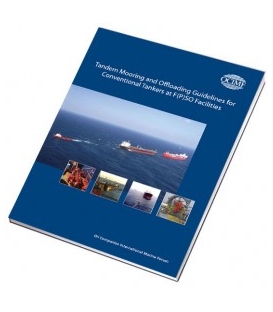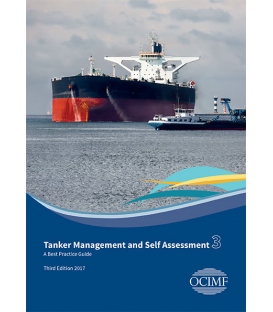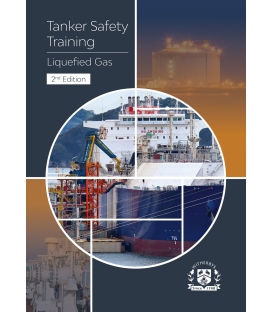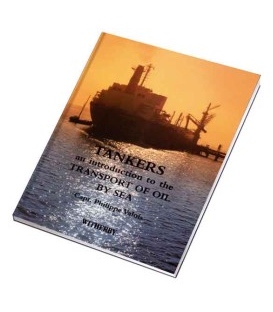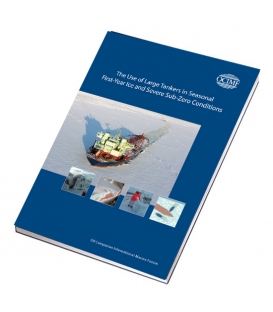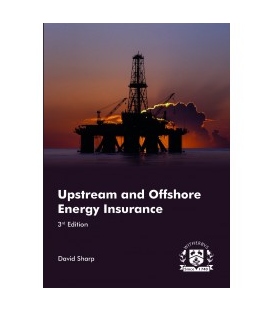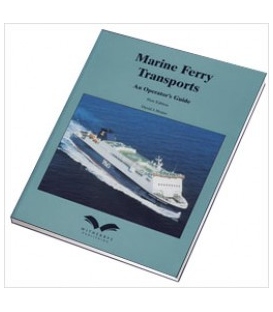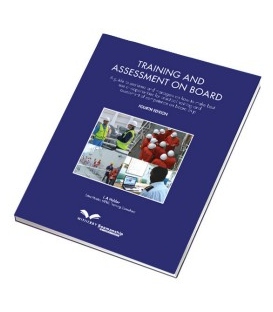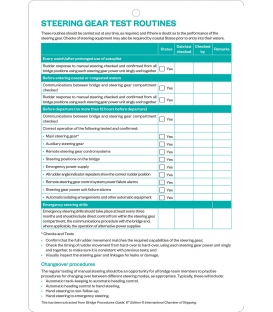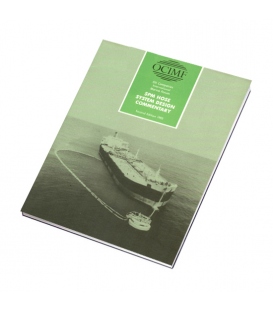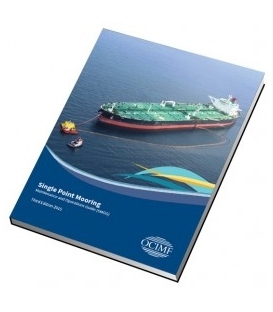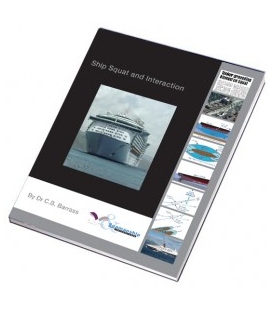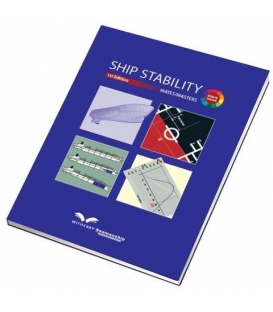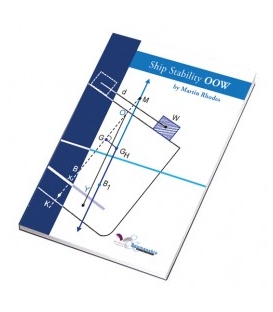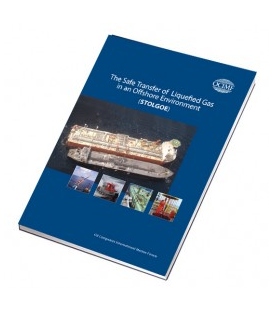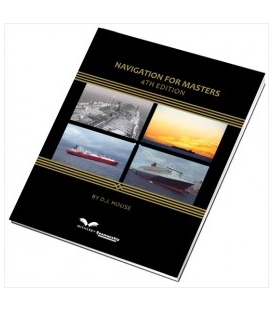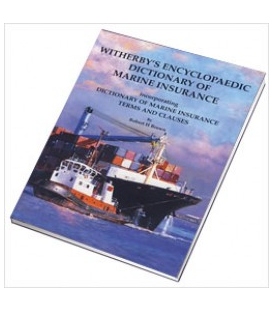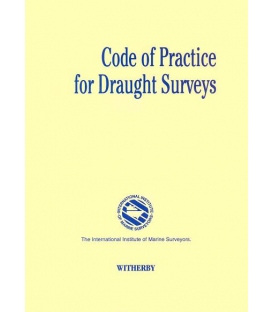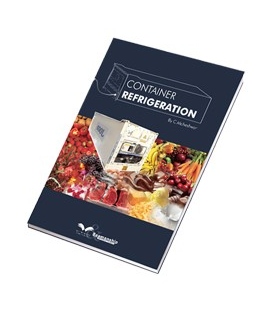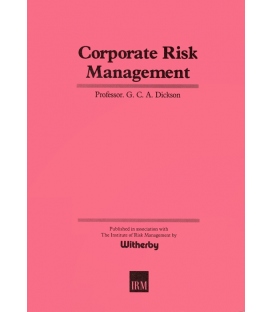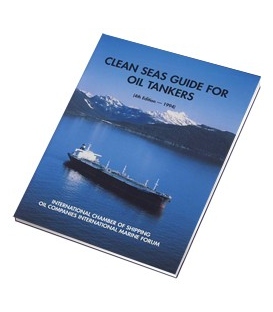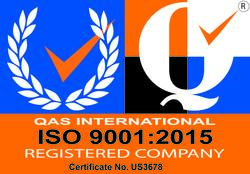

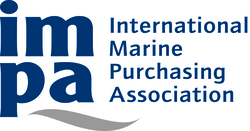
Sign up for our Newsletter
Liquefied Gas Fire Hazard Management, 1st Edition, 2004
Brings together, in a single volume, the principles of liquefied gas fire prevention and fire fighting.
It covers a broad spectrum of the liquefied gas industry, including large refrigerated and smaller pressurised storage terminals, ships, cylinder filling plant and road and rail tanker loading racks.
The book has been compiled for operational staff, such as plant supervisors and ships' officers, who are involved in the handling of flammable liquefied gases. It will also be of benefit to fire officers and emergency planners who have liquefied gas instillations within their jurisdiction, or experience regular road or rail car traffic involving these products in their area.
This publication has been compiled to provide readers with an insight into the design and operation of liquefied gas installations and the equipment essential to the safe and efficient functioning of such installations.
Foreword
Acknowledgements
Introduction
Table of Plates
Bibliography
Definitions
Chapter 1 Characteristics and Hazards of Liquefied Gases
1.1 Introduction
1.2 Liquefied Natural Gas (LNG)
1.3 Liquefied Petroleum Gas (LPG)
1.4 Chemical, Gases and Unsaturated Hydrocarbons
1.5 Combustion Characteristics of Gases
1.6 Thermal Radiation
Chapter 2 Liquefied Gas Installations
2.1 General Considerations
2.2 Pressurised Storage
2.2.1 Spheres and Cylindrical Tanks
2.2.2 Mounded Storage
2.2.3 Cavern Storage
2.3 Semi – pressurised Storage
2.4 Refrigerated Storage
2.4.1 Single Containment Refrigerated Storage
2.4.2 Double Containment Refrigerated Storage
2.4.3 Full Containment Refrigerated Storage
2.4.4 Inground LNG Storage Tanks
2.5 Gas Detection Systems
2.6 Relief Valves
2.7 Fire Protection
2.7.1 Deluge Systems
2.7.2 Passive Fire Protection (P.F.P) Coatings
2.8 Leakage of Liquefied Gas not Ignited
2.9 Ignited Leakage of Liquefied Gas
2.10 Burn Down
2.11 Vessels and Storage Tanks Threatened by Fire
2.12 Boiling Liquid Expanding Vapour Fire Explosions (BLEVE)
2.13 Inspection of Pipework, Bellows and Relief Valves
2.13.1 Relief Values
2.14 Cylinder Filling (Bottling) Plants
2.14.1 Introduction
2.14.2 Site Layout
2.14.3 Electrical Installations in Potentially Hazardous Atmospheres
2.14.4 Electrostatic Hazard Precautions
2.14.5 Cylinder Storage
2.14.6 Cylinder Filling
2.14.7 Cylinder Handling
2.14.8 Fire and Gas Detection
2.14.9 Ventilation
2.15 Road and Rail Loading and Unloading Racks
2.15.1 Road Tanker Racks
2.15.2 Rail Tank Car Racks
2.15.3 Fire and Explosion Protection
2.16 Terminal Jetties
2.16.1 General Considerations
2.16.2 Ship – to – shore Communication
2.16.3 Moorings
2.16.4 Cargo Hoses
2.16.5 Marine Loading Arms (MLAS)
2.16.6 Insulating Flanges and Ship/Shore Boarding Cables
2.16.7 Access and Egress
2.16.8 Firefighting Equipment
2.16.9 International Ship/Shore Fire Connection
2.16.10 Ship/Shore Interface Emergency Response
Chapter 3 Liquefied Gas Ships
3.1 Introduction
3.2 Fully Refrigerated LPG Carriers
3.3 Semi – Pressurised LPG/Chemical Gas Carriers
3.4 Fully Pressurised Liquefied Gas Carriers
3.5 LNG Carriers
3.5.1 Membrane LNG Containment Systems
3.5.2 Moss Spherical Tank LNG Containment System
3.6 Ship Design and Equipment
3.7 Fire and Safety Systems
3.7.1 General Ship Requirements
3.7.2 General Gas Carrier Requirements
3.7.3 Water Spray System
3.7.4 Fixed, Dry Chemical Powder Extinguishing System
3.7.5 Carbon Dioxide for Cargo Compressor Rooms
3.7.6 Jet Spray Nozzles
3.7.7 Halon Fire Suppressant Systems and their Replacements
3.8 Emergency Shut Down Systems
3.9 Cargo Tank Relief Valves and Vent Systems
3.10 “Gas safe” and “Gas Dangerous” Zones and Spaces
3.11 Gas Detections Systems
Chapter 4 Principles of Fire Hazard Management
4.1 Risk Based Versus Prescriptive Standards
4.2 Hazard Management Planning – Five Basic Steps
4.3 General Considerations
4.4 Scenario Worksheets and Risk Assessment Tools
4.5 Ancillary Fire Risks
4.6 Domino Effects
Chapter 5 Prevention of Fires and Explosions
5.1 Control of Ignition Sources
5.1.1 Introduction
5.1.2 Containment and Ventilation
5.1.3 Potential Ignition Sources
5.1.4 Applicability and General Design Guidance
5.1.5 General Ignition Source Control Precautions
5.1.6 Radio and Radar Frequency Ignition
5.1.7 Lightning and Static
5.2 Area Classification
5.2.1 Introduction
5.2.2 Applicability
5.3 Ship/Shore and Terminal / Road tanker Interfaces
5.4 Prevention of Fires in Liquefied Gas Containment Systems
5.5 Security and Visitors
5.5.1 Introduction
5.5.2 General Security Precautions
5.6 Permit – to – Work Systems
5.6.1 Introduction
5.6.2 Applicability
Chapter 6 the Principles of Fire and Gas Detection
6.1 Detection of Leakage
6.1.1 Introduction
6.1.2 Types of Leak Detection and Modes of Operation
6.2 Applicability of Gas Detection Equipment
6.3 General Design Guidance for Gas Detection Equipment
6.4 Fire Detection
6.4.1 Types of Fire Detection Devices
6.4.2 Smoke Detection
6.4.3 Heat Detection
6.4.4 Flame Detection
6.4.5 Incipient Combination Fire/Gas Detection
6.5 Applicability of Fire Detection Systems
6.6 Capabilities and Limitations of Fire Detection Systems
6.7 General Design Guidance for Fire Detection Systems
Chapter 7 Fire and Explosion Mitigation
7.1 Passive Fire Protection
7.1.1 Introduction
7.1.2 PFP Capabilities
7.1.3 PFP Ratings
7.1.4 Typical Applications of Passive Fire Protection
7.1.5 Types of PFP
7.1.6 PFP Design Considerations
7.1.7 Intumescent Materials
7.1.8 Cementitious Materials
7.1.9 Ceramic and Mineral Wool Fibres
7.1.10 Prefabricated Steel Panels
7.1.11 Composite Materials
7.1.12 Water Fill
7.2 Containment and Spill Control
7.2.1 Isolation Valves
7.2.2 Blow Down Depressurisation
7.2.3 Fire Divisions
7.2.4 Limiting Spills and Releases
7.2.5 Loss of Containment
7.3 Fire Water Systems
7.4 Water Deluge Spray and Sprinkler Systems
7.4.1 Applications of Water Deluge/Spray systems
7.4.2 Deluge Systems Design Standards and Approvals
7.4.3 Deluge System Design Considerations
7.5 Water Monitor Systems
7.5.1 Introduction
7.5.2 Applicability of Water Monitors
7.5.3 Design Considerations
7.6 Foam Systems
7.6.1 Mode of Operation
7.6.2 Types of Foam Concentrate
7.6.3 Applicability of Foams
7.6.4 Limitations of Foam
7.6.5 Design Considerations
7.7 Dry Chemical Systems
7.7.1 Types of Dry Chemical
7.7.2 Applicability of Dry Chemicals
7.7.3 Limitations of Dry Chemicals
7.7.4 Design Considerations
7.8 Water Mist Systems
7.8.1 Mode of Operation
7.8.2 Types of Water Mist System
7.8.3 Applicability of Water Mist Systems
7.8.4 Design Guidance
7.8.5 Design Considerations
7.8.6 Concluding Remarks on Water Mists
7.9 Gas Dispersion With Water Spray
7.10 Portable Firefighting Equipment
7.10.1 Fire Extinguishers
7.10.2 Hose Reels
7.10.3 Fire Hose
7.10.4 Branches/Nozzles
7.10.5 Water Monitors
7.10.6 Foam Monitors
7.10.7 Breathing Apparatus
7.10.8 Equipment Approvals and Standards
7.10.9 Suitability of Equipment and Training
7.11 Firefighting (F1 F1) Tugs
7.11.1 Firefighting Tug Classification
Chapter 8 Emergency Response Strategies
8.1 Emergency Procedures and Local Response Plans
8.1.1 General Objectives
8.1.2 SIGTTO Marine Terminal Contingency Planning
8.1.3 Signage
8.1.4 Tanker/Terminal Awareness
8.1.5 Accepting and Undertaking Response Strategies
8.1.6 Differences in Ship/Shore Philosophy
8.1.7 On – scene Commander
8.1.8 Incident Control Centres
8.1.9 Maintenance and Updating of Plan or Procedures
8.1.10 Training and Exercises
8.2 Evacuation Plans
8.3 Tanker Emergency Plans
8.3.1 Emergency Command Centre
8.3.2 Emergency Parties or Crew
8.3.3 Back up Emergency Party or Crew
8.3.4 Engineer Group
8.3.5 Incident/Area – specific Tanker Emergency Plans
8.4 Emergency Transfer Equipment for Road Tankers
8.5 Incident response Strategies
8.5.1 Release of Liquefied Gases
8.5.2 Release of Gas Vapours
8.5.3 Dispersion with Water Spray
8.5.4 Foam Blanketing for Vapour Suppression
8.5.5 LPG and LNG Pool Fires
8.5.6 Gas Releases and Jet Fires
8.5.7 Unconfined /Semi – Confined Vapour Cloud Explosions
8.5.8 Fireball/ Boiling Liquid Expanding Vapour Explosion (BLEVE)
8.5.9 Excessive use of Fire water for Gas Tanker Fires
8.5.10 Fire Water Run- off
8.6 Personal Protective Equipment (PPE) for Responders
8.6.1 Selection of PPE
8.6.2 Fire Retardant Treatments for PPE versus Inherently Fire Resistant
8.7 Scenario – Specific Emergency Response Plans (ERPS)
8.7.1 Purpose and Content of ERPS
8.7.2 Key Elements of an EPR
8.7.3 ERP Equipment and Resources
8.7.4 Effects Maps
8.7.5 Radiant Heat Examples
8.7.6 Training/ Response Performance Measurement
8.8 Fire, Explosion and Gas Dispersion Modelling
8.8.1 Pool Fire Model
8.8.2 Jet Fire Model
8.8.3 Gas Dispersion Model
8.8.4 Explosion Models
Chapter 9 Training for Emergency Responders
9.1 Competency Requirements
9.2 Liaison with Fire Service/Port Authority/Tug Boat Owners
9.2.1 Fire Service/Fire Brigades
9.2.2 Port Authorities
9.2.3 Tug Boats
9.2.4 Contracting Arrangements
9.2.5 Shipowning Interests
9.3 Exercises and Drills
Chapter 10 Maintenance of Critical Systems
10.1 Introduction
10.2 Applicability
10.3 Inspection and Testing of Fire Systems
10.3.1 Direct system Tests
10.3.2 Indirect System Tests
10.3.3 Testing Passive Fire Protection
10.3.4 Development of In – house Testing Procedures
10.4 Commissioning Fire Systems
10.4.1 Introduction
10.4.2 Commissioning Test Procedures
10.5 System Maintenance
10.5.1 Passive Fire Protection
10.5.2 Fire Detection Equipment
10.6 Emergency Response Testing
10.6.1 Responsibility for Emergency Response Plans and Exercises
10.6.2 Documentation Control and Review Scheduling
10.6.3 Keeping Lists of Key Personnel; up – to – date
10.6.4 Facility, Plant and Equipment Changes
10.6.5 Training and Exercises
10.7 Audits
Chapter 11 Liquefied Gas Incidents
Incident No 1: Attack on “Gaz Fountain”
Incident No 2: Cleveland LNG Tank Failure
Incident No 3: “Val Rosandra” Propylene Fire
Incident No 4: Refrigerated LPG Storage Tank Fire
Incident No 5: Feyzin Pressurised Storage Tanks Fire
Incident No 6: Mexico City LPG Distribution Depot Fire
Incident No 7 Pajaritos Port LPG Transfer Fire
Incident No 8 “Sunrise” Pressurised LPG Flaring

